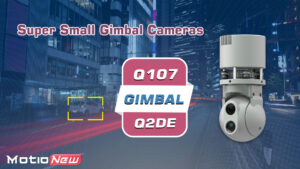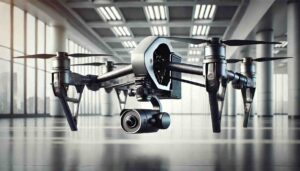At Motionew.com, we’re passionate about helping drone enthusiasts make smarter decisions—especially when it comes to choosing the right components for their VTOL drones. One of the most commonly asked questions we hear is: What is the purpose of a gimbal on a drone?
If you already understand the basics of VTOL drones but are not a technical expert, this blog post is made for you. We’ll explain what a gimbal does, why it’s important, and how it can drastically improve your drone’s performance in imaging and inspections.
What Is a Gimbal?
A gimbal is a mechanical stabilizing device that holds your drone’s camera or payload steady during flight. It uses motors and sensors to detect drone movement—like tilting or shaking—and automatically compensates to keep the camera level and stable.
Gimbals are usually described by their axes:
- 2-axis gimbals stabilize pitch and roll.
- 3-axis gimbals stabilize pitch, roll, and yaw for maximum smoothness.
In other words, when your drone moves, the gimbal moves in the opposite direction to cancel out the motion and maintain a steady image.
Why Do VTOL Drones Need Gimbals?
VTOL drones take off and land vertically but transition into forward flight like airplanes. These changes in motion, along with wind and vibrations, can cause the drone to tilt or shake. Without a gimbal, your onboard camera would capture jittery, tilted, or blurry footage.
A gimbal solves this problem by:
- Stabilizing the camera in real time.
- Ensuring smooth video footage, even when the drone moves quickly.
- Allowing precise control of camera angles without adjusting the drone’s position.
Key Benefits of Using a Gimbal on a Drone
1. Professional-Quality Footage
If you’re using your drone for photography or filming, a gimbal is essential. It ensures your videos are smooth and free of sudden jerks—even during wind gusts or turns.
2. Accurate Data Collection
For applications like mapping, surveying, or inspections, it’s crucial to have a clear, level view. Gimbals keep the camera pointed exactly where it needs to be, helping gather reliable data.
3. Better Control Over the Camera
Modern gimbals can be controlled remotely. You can tilt, pan, or rotate the camera separately from the drone’s movement. This is helpful for tasks like inspecting power lines or focusing on a subject in motion.
4. Improved Safety and Efficiency
By keeping your camera aligned and stable, a gimbal reduces the need to re-fly missions just to get better footage. That saves battery life and time.
Common Use Cases for Gimbals
- Aerial Photography & Videography: Capture cinematic, stabilized videos.
- Infrastructure Inspection: Get sharp visuals of buildings, towers, bridges, etc.
- Surveying & Mapping: Maintain accurate angles for georeferenced data.
- Search & Rescue Missions: Keep visuals steady while tracking subjects in motion.
How to Choose the Right Gimbal for Your VTOL Drone
When selecting a gimbal, consider the following:
- Weight Capacity: Make sure your drones maximum payload capacity can support the weight of your camera.
- Axis Stabilization: A 3-axis gimbal offers better stabilization than a 2-axis one.
- Camera Compatibility: Match the gimbal to the size and type of your payload.
- Power Supply: Choose one that integrates smoothly with your drone’s battery system.
Need help choosing? Our team can assist you in finding the right match from our Gimbal Technology collection.
Summary
So, what is the purpose of a gimbal on a drone?
In short: A gimbal keeps your drone’s camera stable, which leads to smooth footage, better data, and more efficient flights. It’s one of the most important components for anyone using a VTOL drone for imaging, surveying, or inspection tasks.
Ready to upgrade your setup? Browse our full collection of components and accessories at Motionew.com.




